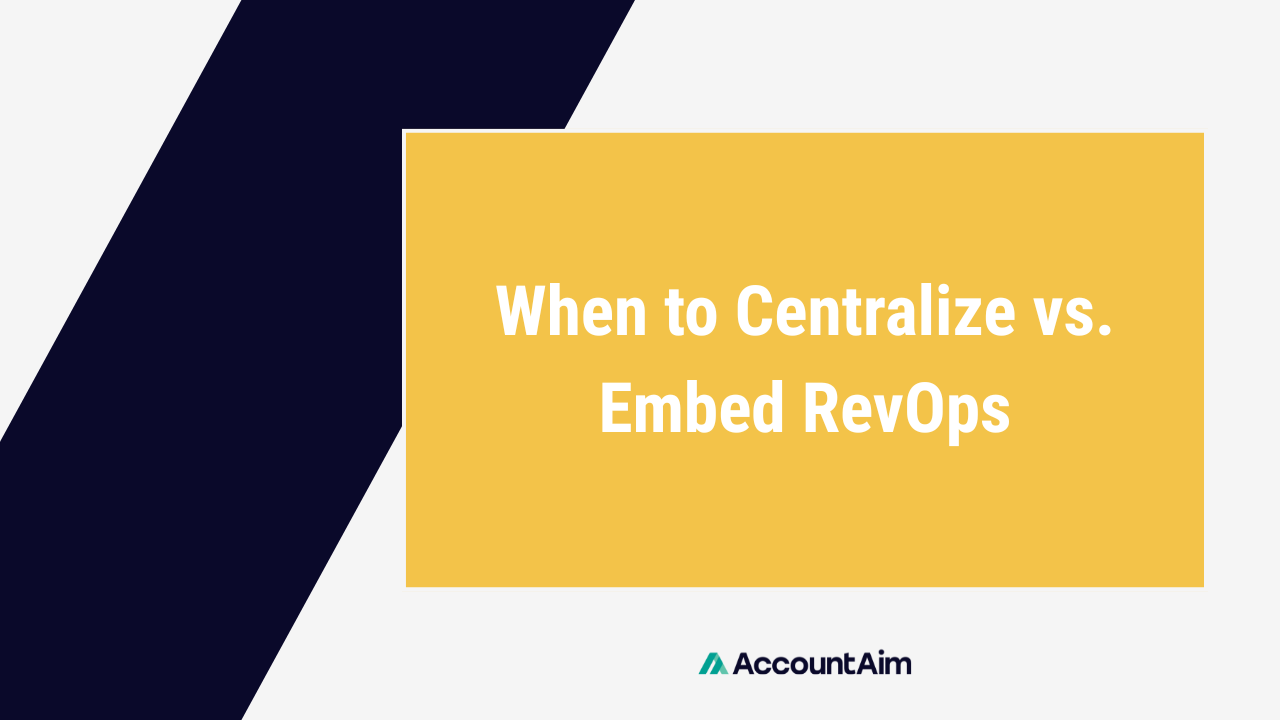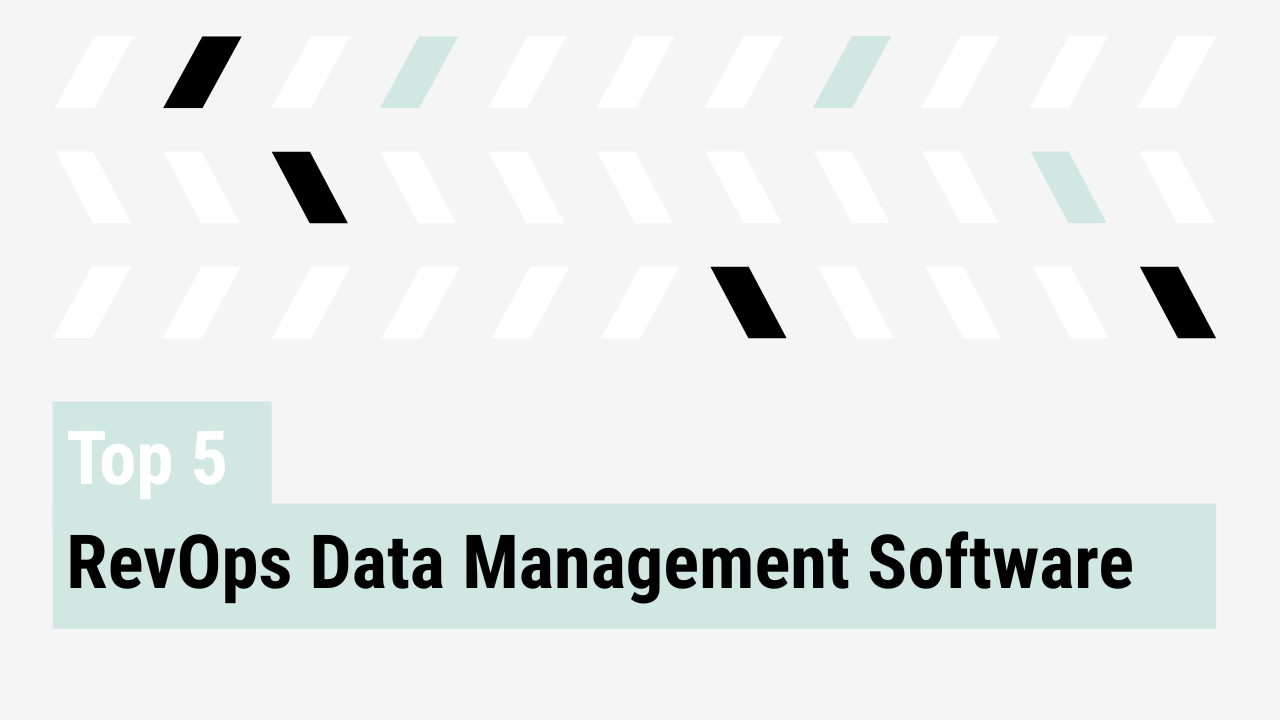Choosing whether to centralize vs. embed RevOps is one of the most important organizational design decisions for GTM leaders. The structure you pick can shape forecasting accuracy, cross-functional alignment, and even the way the C-suite perceives the value of your team. Yet many organizations make this choice reactively, without a clear framework. Each model (centralized, embedded, or hybrid) has strengths and weaknesses that surface at different stages of growth.
This article explores the pros and cons of each approach, the decision criteria that matter most, and how to ensure whichever model you choose drives business outcomes.
The structural options: centralized, embedded, hybrid
RevOps structures generally fall into three categories.
Centralized RevOps consolidates all operations talent into a single team serving every GTM function.
Embedded or decentralized RevOps assigns ops professionals directly into marketing, sales, or customer success.
Hybrid or “platform plus pods” blends the two, with a central core managing governance and data while pods sit closer to the field for execution.
These structures are not static. Organizations often start centralized to bring order, shift to hybrid as complexity grows, and later embed more deeply as product lines or regions mature. Structure should evolve with the company rather than remain fixed.
Pros and cons: trade-offs of each model
The centralized model delivers consistency and control. It ensures standardized metrics, avoids tool duplication, and provides executives with a single source of truth. However, it can feel distant from frontline teams, creating bottlenecks when quick responses are needed. Central teams also risk being seen as cost centers if they fail to show direct impact on revenue outcomes.
The embedded model thrives on proximity. Ops professionals build trust with their teams, respond quickly to tactical needs, and adapt to local nuances. The downside is fragmentation. Without guardrails, embedded teams drift into siloed processes, inconsistent data definitions, and duplicate tools, all of which undermine executive confidence.
The hybrid model seeks to balance these trade-offs:
- A central platform team governs data, systems, and definitions
- Embedded pods work alongside GTM functions for speed and context
- Success depends on strong governance and clear decision rights
Decision criteria: when to centralize vs. embed
The right structure depends on your company’s stage, motion, and culture. Early-stage companies often benefit from centralization, which brings order and a clear backbone for data and forecasting. As organizations scale and GTM motions diversify, embedding can provide the agility and specialization needed for growth.
A practical way to decide is to evaluate five levers:
- Stage and scale: centralize early, embed as complexity rises
- Complexity of GTM motion: shared buyers, centralize; distinct products or regions, embed
- Tech and data maturity: weak backbone, centralize; advanced teams, embed
- Need for speed: embed for responsiveness, centralize for governance
- Culture and sponsorship: structure only works if leadership respects RevOps as strategic
No company should expect to “set and forget” its RevOps structure. Revisiting these criteria regularly ensures the operating model fits the moment.
How to succeed: governance and operating rhythms
Regardless of whether your team is centralized, embedded, or hybrid, success comes down to governance and rhythm. Without clarity on decision rights, shared data definitions, and a visible backlog, any structure risks breaking down. A central RevOps team must act as connective tissue, ensuring consistency while leaving room for flexibility in the field.
Strong operating rhythms help avoid bottlenecks. Leaders should establish cadences for backlog review, data quality checks, and executive alignment. Governance means building the minimum viable structure that keeps teams coordinated and accountable without slowing them down.
Transitioning between models
RevOps structure is fluid. Signs that it is time to centralize include inconsistent metrics across teams, fragmented tech stacks, or rising operational debt. Signs that it is time to embed include complaints from frontline teams about RevOps being out of touch, or when specialized knowledge becomes essential to move deals faster.
Transitions require thoughtful change management. Shifting from embedded to central means consolidating processes and resetting expectations. Moving from central to hybrid means empowering local pods without losing control of definitions. Leaders should treat these transitions as an iterative design process that adapts RevOps to business needs.
What the C-suite cares about
There is no universally “best” structure for RevOps. What matters is whether your model improves forecasting confidence, reduces waste, and enables faster execution. Framing the decision around business outcomes rather than org charts is how RevOps leaders earn recognition at the C-suite level.
In practice, this means regularly asking: is our current structure helping or hindering revenue efficiency? By aligning structure to stage, complexity, and executive mandate, you ensure RevOps operates as a strategic driver of growth.



